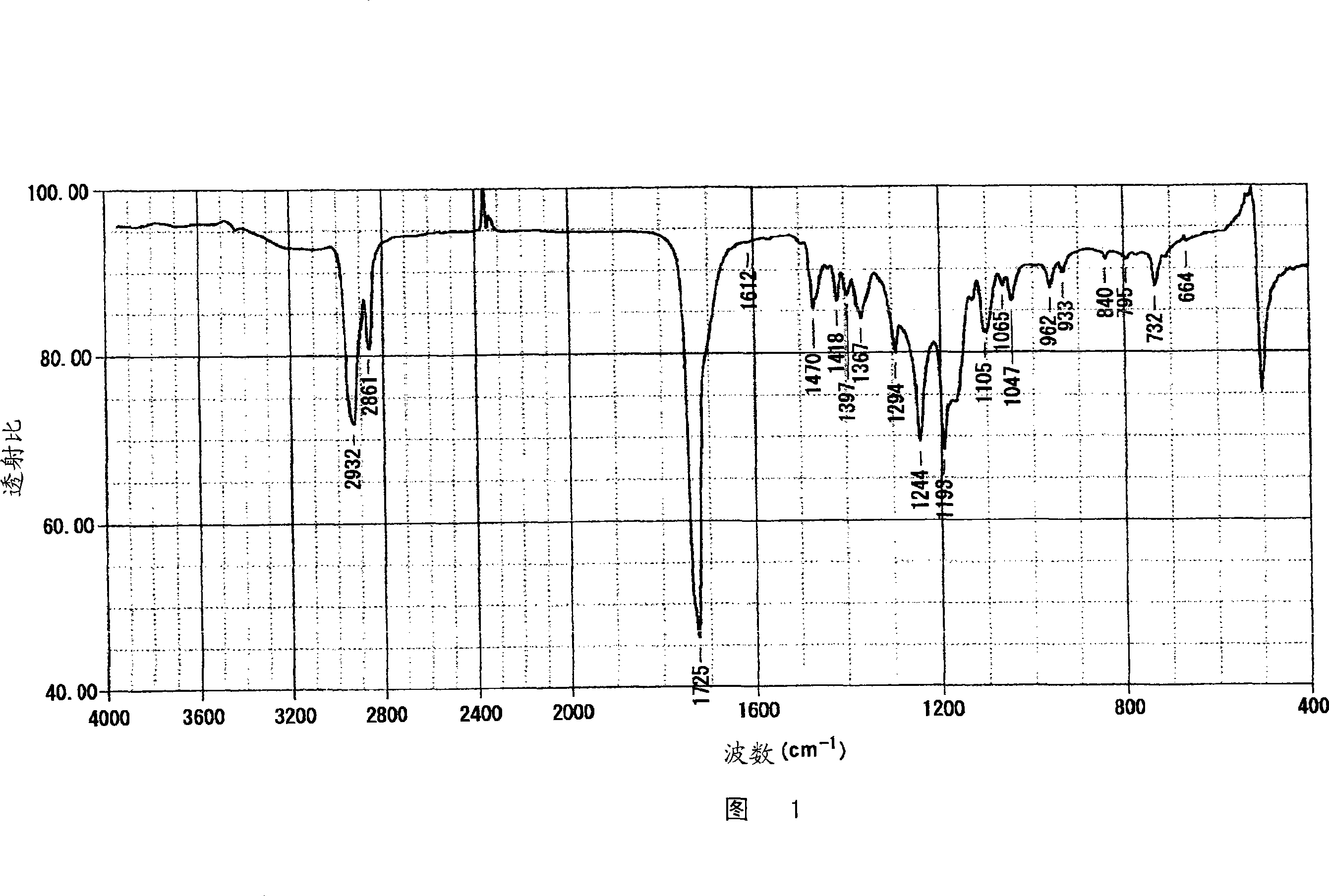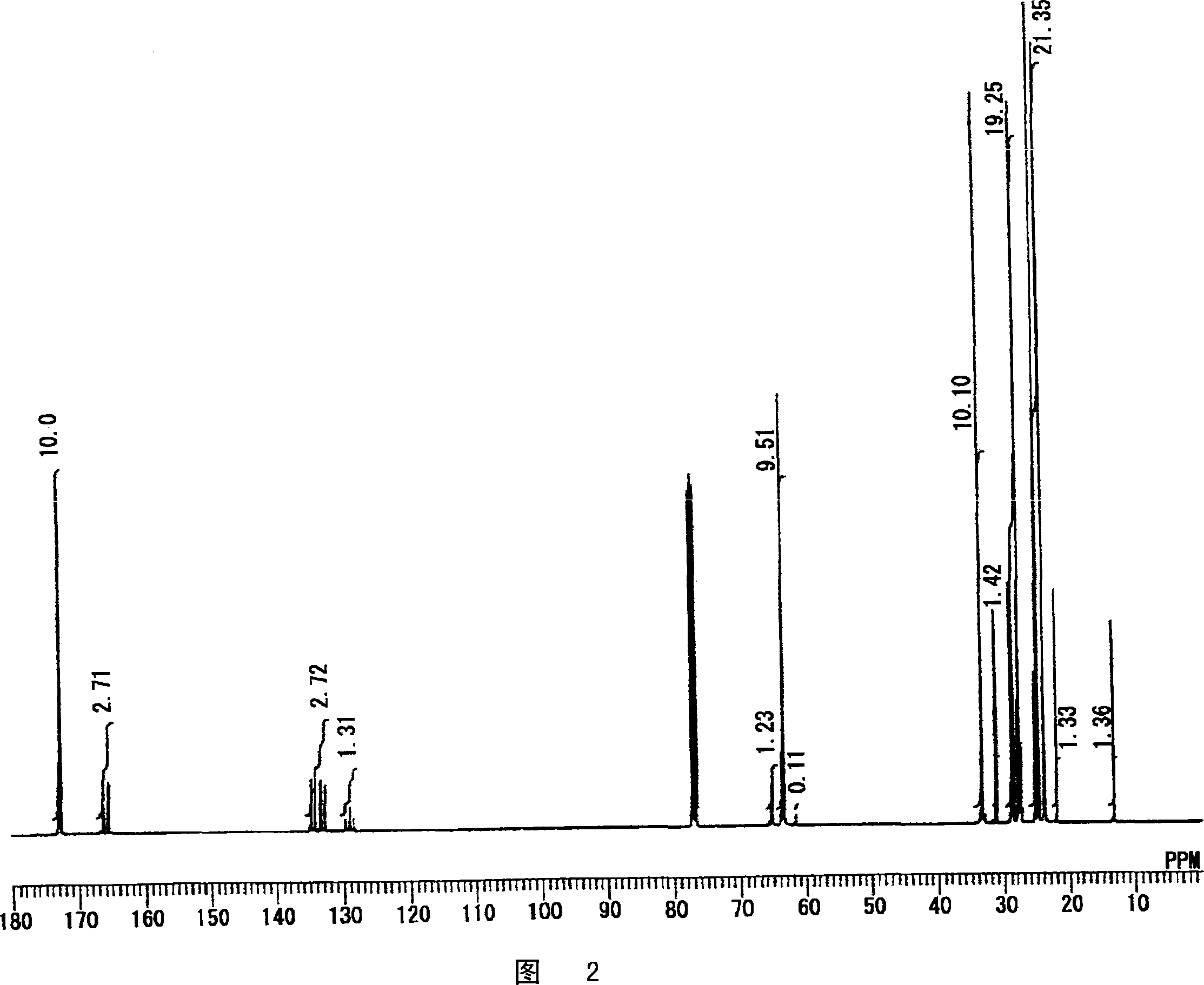Dispersing agent, method for producing same, and pigment dispersion and ink containing such dispersing agent
A technology of dispersants and pigments, applied in inks, pigment pastes, chemical instruments and methods, etc., can solve the problems of high viscosity, poor ability, poor micro-dispersion of pigments, etc.
- Summary
- Abstract
- Description
- Claims
- Application Information
AI Technical Summary
Problems solved by technology
Method used
Image
Examples
preparation example Construction
[0164] The polymerization of the alkylene oxide can be carried out according to a known method, for example, in the presence of a basic catalyst at a temperature of 100 to 200°C under a pressurized state. As a polymer (PeOH) obtained by polymerizing an alkylene oxide to the hydroxyl group of a monohydric alcohol, it is commercially available. For example, the UNIEX series manufactured by Nippon Oil & Fat Co., Ltd., and the Nippon Oil & Fat Co., Ltd.'s ブレンマ series. As polymer (PeOH). Specific examples of commercially available products include UNIEX M-400, M-550, M-2000, Beneman PE-90, PE-200, PE-350, AE-90, AE-200, AE-400, PP-1000, PP-500, PP-800, AP-150, AP-400, AP-550, AP-800, 50PEP-300, 70PEP-350B, AEP series, 55PET-400, 30PET-800, 55PET-800, AET series, 30PPT-800, 50PPT-800, 70PPT-800, APT series, 10PPB-500B, 10APB-500B, etc. Using these commercially available products can omit the first step.
[0165] Here, the alkylene group of the alkylene oxide constitutes the repeating un...
Embodiment 1
[0468] 62.6 parts of 1-dodecanol, 287.4 parts of ε-caprolactone, and 0.1 part of monobutyltin oxide (IV) as a catalyst are charged into a reaction vessel with a gas introduction tube, thermometer, condenser and stirrer; After nitrogen substitution, heating was carried out at 120°C for 4 hours and stirring. When 98% of the reaction was confirmed by solid content measurement, the first step ("manufacturing step 1" described in the following tables) was terminated. The number average molecular weight of this reaction product was 1,350 and the weight average molecular weight was 1,890.
[0469] 36.6 parts of pyromellitic dianhydride was added to the above reaction product, and the reaction was carried out at 100°C for 5 hours. By measuring the acid value to confirm that 97% or more of the acid anhydride is partially esterified, the second step is completed ("manufacturing step 2" described in the following tables). The obtained dispersant is a waxy solid at 25°C, with average number T...
Embodiment 2~15
[0472] The same equipment, catalyst, and reaction operation as in Example 1 were used, and the compounds shown in Table 1 and Table 2 were used as starting materials in the amounts shown in Table 1 and Table 2 to obtain each dispersant. Among them, in Examples 4, 5, 9, 12, 13, and 15, the inside of the reaction vessel was replaced with dry air instead of nitrogen. In addition, the ""水" described in Example 7 and Example 13 is added after the acid value of the tetracarboxylic dianhydride and the hydroxyl group of the polyester having a hydroxyl group at one end has been confirmed, and is used for hydrolysis. Residual anhydride in water.
[0473] [Table 1]
[0474] Example
1
Example
2
Example
3
Example
4
Example
5
Example
6
Example
7
Example
8
The origin of manufacturing step 1
Material composition ratio (parts)
Monoalcohol
62.6
6...
PUM
| Property | Measurement | Unit |
|---|---|---|
| particle diameter | aaaaa | aaaaa |
| particle diameter | aaaaa | aaaaa |
| specific surface area | aaaaa | aaaaa |
Abstract
Description
Claims
Application Information
 Login to View More
Login to View More - R&D
- Intellectual Property
- Life Sciences
- Materials
- Tech Scout
- Unparalleled Data Quality
- Higher Quality Content
- 60% Fewer Hallucinations
Browse by: Latest US Patents, China's latest patents, Technical Efficacy Thesaurus, Application Domain, Technology Topic, Popular Technical Reports.
© 2025 PatSnap. All rights reserved.Legal|Privacy policy|Modern Slavery Act Transparency Statement|Sitemap|About US| Contact US: help@patsnap.com



